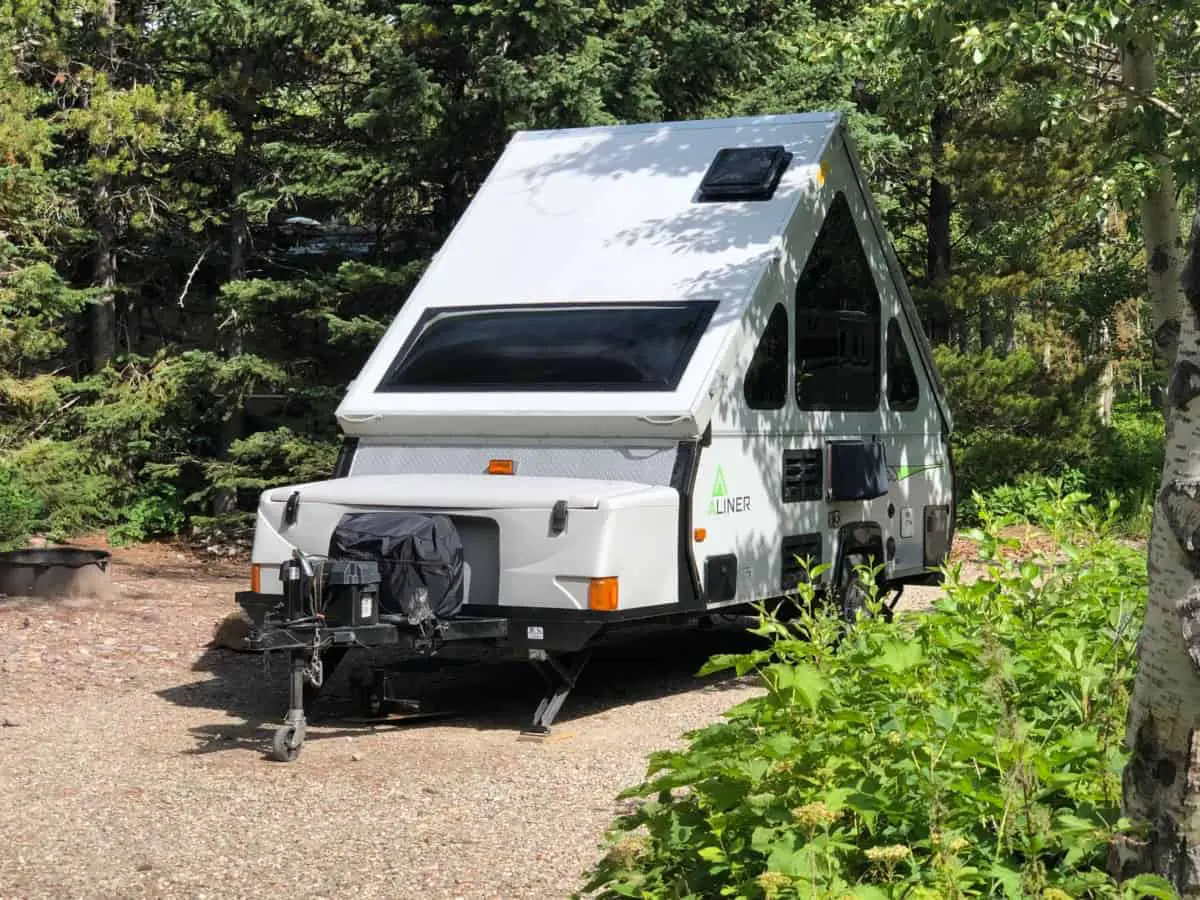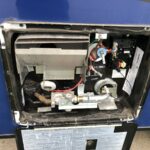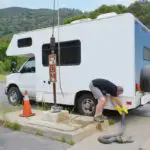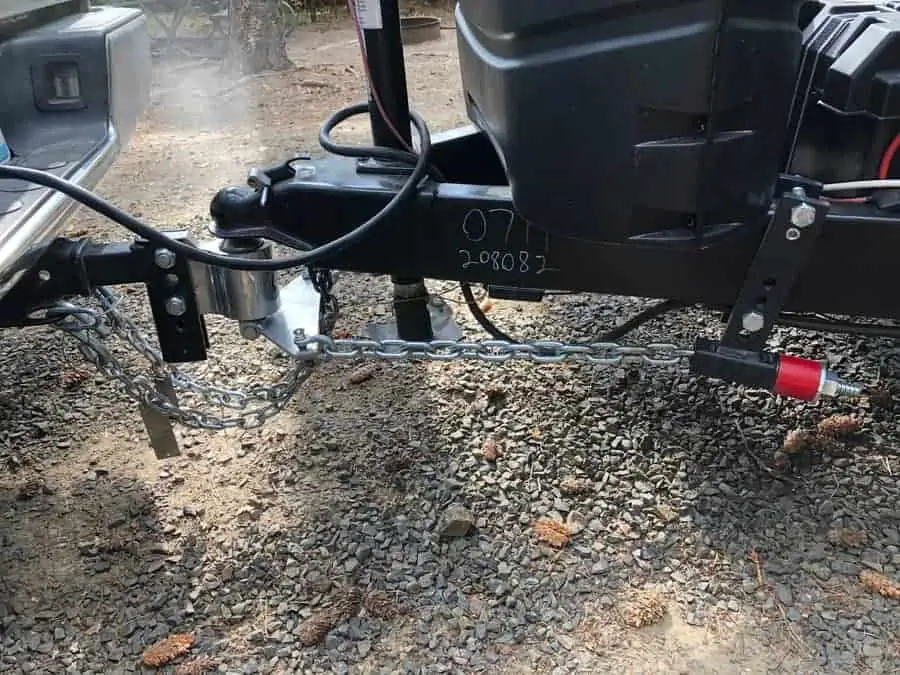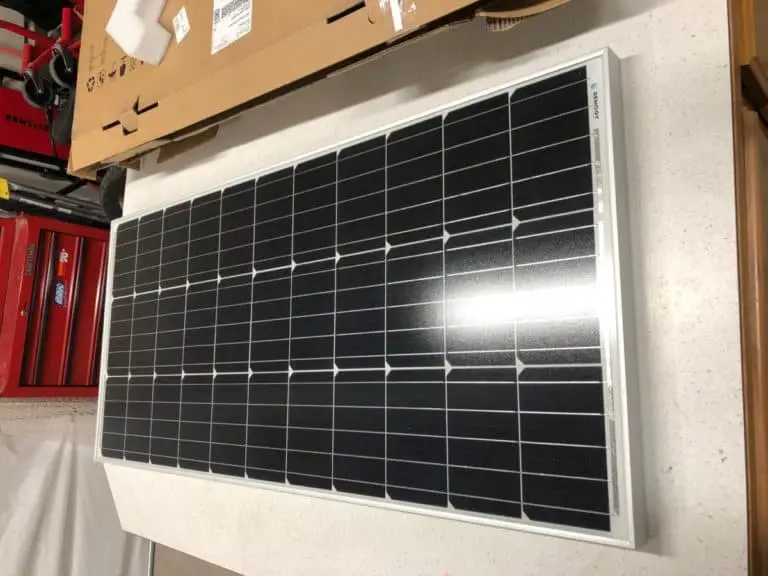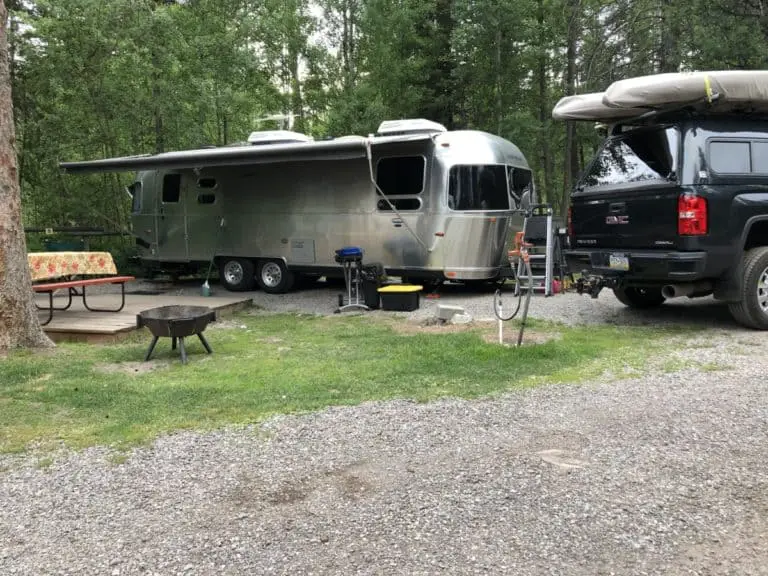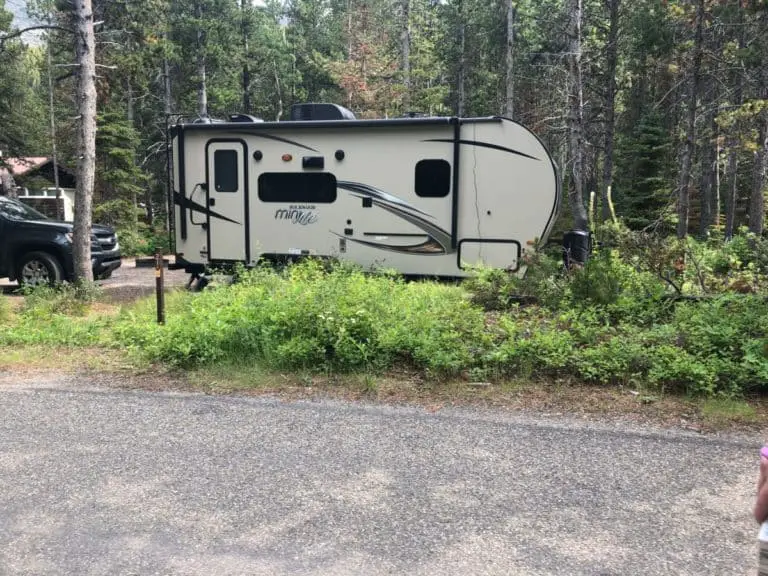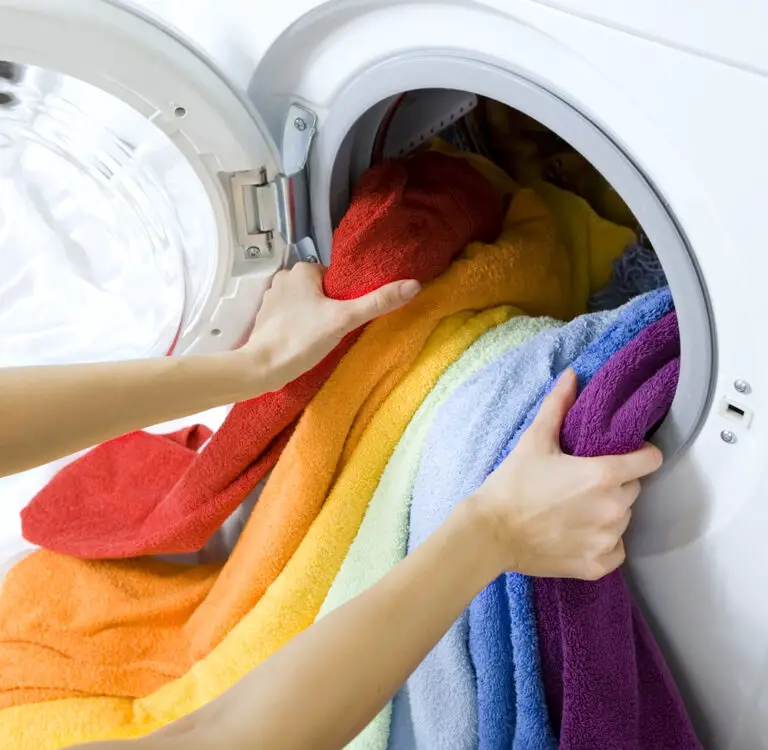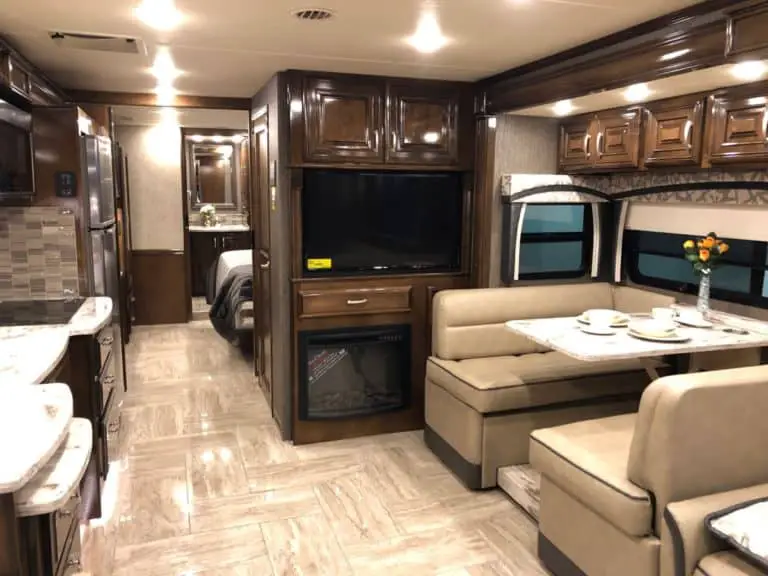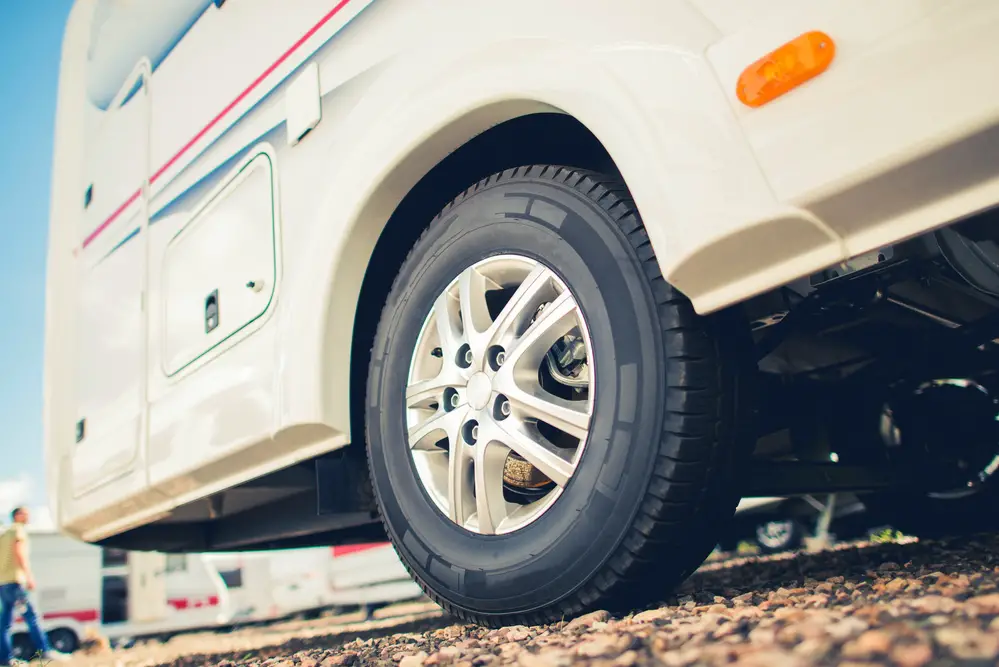Does the AC Actually Work in a Popup Camper? Essential Guide
A common question among popup camper enthusiasts is whether air conditioning units work effectively in these mobile havens. As summer camping trips become increasingly popular, it is crucial to ensure a comfortable and enjoyable experience while spending time outdoors. In this article, we will explore the functionality of air conditioning in a popup camper and discuss factors that may influence its performance.
An a/c unit will cool a popup camper and help maintain a comfortable temperature, but they will run a lot due to the lack of insulation. Weather, shade, insulation, how much canvas is on your popup, and the type of a/c unit will dictate how effective your a/c unit will be at cooling your camper.
Understanding these factors and considering practical solutions will help campers make informed decisions about integrating air conditioning effectively within their popup campers. Stay tuned as we delve further into the functionalities and benefits of incorporating air conditioners in popup campers to guarantee cool, relaxing vacations for all.
Do A/C Units Actually Keep Popup Campers Cool?
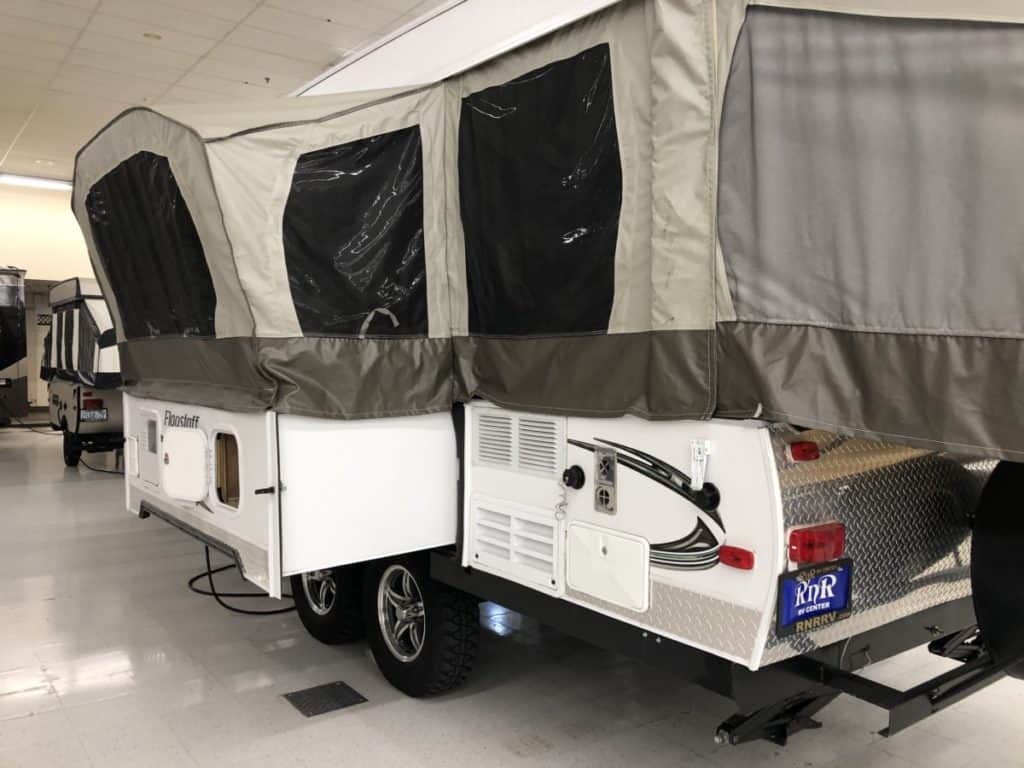
AC units in popup campers can work well, but their effectiveness may vary depending on various factors such as the size of the camper, insulation, ambient temperature, and the AC unit’s capacity. Here are some considerations:
- Cooling Capacity: The cooling capacity of the AC unit should match the size of the popup camper. If the AC unit is undersized for the camper, it may struggle to cool the space adequately. It’s important to choose an AC unit with an appropriate cooling capacity for optimal performance.
- Insulation: Proper insulation plays a crucial role in maintaining the cooling efficiency of the AC unit. Well-insulated popup campers can help retain the cool air generated by the AC unit, making it more effective in hot weather conditions.
- Ambient Temperature: AC units have limitations in extremely hot and humid conditions. If the ambient temperature is excessively high, the AC unit may have to work harder to maintain a comfortable temperature inside the camper. In such cases, the cooling performance may be affected.
- Power Source: Popup campers typically have limited power resources, and AC units require a significant amount of electricity to operate. It’s essential to ensure that the camper has an adequate power supply, such as a reliable electrical hookup or a generator, to power the AC unit effectively.
- Maintenance: Regular maintenance, such as cleaning the filters, checking the refrigerant levels, and ensuring proper airflow, is crucial for the efficient functioning of the AC unit. Neglected maintenance can lead to reduced cooling performance.
A/C units are inefficient in Popup Campers
If you are used to the way the a/c works in your house or have been in a hard sided camper, the a/c in a popup will be less cold and less efficient.
If you do have a popup camper with an a/c unit you already know that it probably runs most of the time, this is due to the poor insulation that pop-up campers have as much of the unit is canvas.
The a/c unit on popup campers is meant to keep the area cool and take the edge off of a hot day.
For example, it it is 88 degrees out, a a/c unit on a popup camper may cool the unit down to 77 degrees, but once you turn the unit off you will quickly go back up to 88 degrees in the camper. You will find that you will be running your cooling 100% of the time to keep it cool.
Canvas and vinyl for windows is fairly breathable and won’t retain the cool temperatures and will allow the heat to sneak in your camper.
If you are considering adding a/c to your camper, keep in mind it won’t really hold temperature, but will constantly be on. But, this may be OK for you as if it does take the heat down a bit then you are achieving your goal of being cooler.
How to Maximize A/C in Your Popup Camper
Keeping the air conditioning at its peak performance in a popup camper is crucial for maintaining a comfortable temperature during your camping trip. Here are a few tips to ensure that your A/C unit is functioning efficiently:
- Ensure Proper Intake Ventilation: Attach an extra vent to the intake side of the A/C unit to ensure proper air circulation. This will prevent the unit from recirculating warm air inside the camper, leading to better cooling efficiency.
- Seal the Camper: Make sure that all windows, doors, and openings are tightly sealed to avoid cool air from escaping and warm air from entering. Use weatherstripping to seal any gaps between the camper and the windows or doors. Close any folds or pop up areas if you can. A smaller space will be easier to keep cool.
- Insulate the Camper: Adding insulation material such as reflective bubble wrap or foam insulation can help keep the inside of the camper cooler. Cover the windows, walls, and the roof to minimize heat transfer through these surfaces. Install reflective insulation over pop up canvas areas. This will provide added insulation and prevent heat from entering the thin canvas material of the popouts.
- Use Energy-Efficient Lighting: Replace traditional incandescent light bulbs with energy-efficient LED bulbs to reduce the heat output generated by illumination. LED bulbs emit less heat and consume less power, which helps to keep the camper cooler.
- Park Strategically: Select a camping site that offers ample shade during the hottest parts of the day. Parking under trees or using an awning can significantly reduce the amount of heat entering your camper, lessening the demand on your A/C unit.
- Use Ventilation Fans: Installing ventilation fans can improve air circulation within the camper, helping to distribute cool air evenly and prevent any hot spots from forming.
- If your air conditioner has a filter: Clean it regularly. This will ensure that your a/c unit is running as efficiently as possible.
- Adjust your system’s ducts: To make sure the maximum amount of cool air is flowing out to the areas you need it.
By following these tips, you can ensure that the A/C in your popup camper performs at its best, providing a comfortable and enjoyable camping experience.
Types of Air Conditioning Units in Popup Campers
When deciding the best way to cool your popup camper, it’s essential to know the advantages and disadvantages of each approach. Knowing your options can save you money and ensure the highest level of comfort for you and your camping companions. The four cooling methods we will look at today are a wall mount air conditioner, a roof mount air conditioner, a portable household air conditioner, and a household fan.
Wall Mount A/C
A wall mount a/c like this one(I would buy one without digital controls as it is just something else to go wrong) is an air conditioning unit that you can mount into the wall or window of your camper. You can either install the unit into a window, or a hole that has been cut into the wall of your camper. This can be a cost-effective and efficient option for cooling your camper. Wall mount a/c units can be found from the factory on some units, or installed by the end user. A benefit is that these are self contained and simply require to be plugged in.
Advantages:
- A wall mount air conditioner has the benefit of being very easy to install. You can install it yourself, which saves money on installation fees.
- The system itself is often cheaper than a roof mount air conditioning system, which makes it an affordable option for cooling your camper.
- Since wall mount a/c units often fit in a hole or window within a wall of the camper, the noisier elements of the system will be outside of the vehicle. If you’re worried about your air conditioner making noise, this method will help keep the noise to a minimum.
- This system will typically be more powerful than a portable a/c unit or a fan, so it’s a good option in between these and the stronger roof mount a/c units.
Disadvantages:
- A wall mount a/c is not as powerful as a roof mount air conditioning unit. If you need a stronger a/c, it might be best to consider a rooftop model.
- Wall mount a/c’s are not ducted so will only work in the area it is installed in.
- If you install the unit into a window, you will have to remove and store it for travel, which some may consider inconvenient compared to other methods.
- Won’t run on battery.
Roof Mount A/C
A roof mount air conditioner system is a large box unit that you mount to the top of your popup camper. This is the most powerful method of cooling your camper, and for this reason, it is one of the most popular options. Typically these come preinstalled from the factory, but can be simple to install as they are fairly self contained. To install yourself, you would need to mount to the roof, run power, and thermostat wires.
Advantages:
- Due to its higher btu output, a roof mount air conditioner will be able to keep your camper cool even on a summer’s day or in a hotter climate. If you enjoy using your camper in these conditions, this system is your best bet for staying cool in your camper.
- Unlike many window mounted a/c units, a rooftop a/c will not need to be removed for travel. This makes this system one of the most convenient options as well.
- Due to its location outside of the camper, this system may be one of the quietest options. If you are a light sleeper, noise is important to consider when making an a/c purchase.
- These can be ducted to get into other areas of the camper for better cooling.
Disadvantages:
- Roof mount a/c units are the most expensive option for cooling your popup camper. It might be worth exploring other options before investing in this method unless it comes preinstalled form the factory.
- This is also the most challenging system to install. You will likely need to pay an installation fee, and any repairs can be costly as well.
- These units will use more power than other methods. The energy required is an extra expense to consider when making this decision. You will need to make sure you have a circuit for it in your power distribution pannel prior to install.
- Won’t run on battery.
Portable Household A/C
A portable air conditioner is a convenient way to keep your camper comfortable on a summer’s day. The unit is a machine, usually on wheels, that you can place almost anywhere throughout your camper. It will often have a built-in fan to keep the cold air circulating throughout the camper.
Advantages:
- Due to this system’s mobility, it can be placed almost anywhere you need to keep cool. If you only need to cool one particular part of your camper, this can be a simple and energy-efficient way of doing so.
- When not using your camper you can move this to your house or a shed and use it for multiple rooms if you would like.
- This system is easy to use and will not require any complicated assembly or costly maintenance and repairs. This is truly plug and play.
- Newer technology allows these machines to be programmable, and they often come with a remote control for convenient use.
Disadvantages:
- You will need to place the a/c relatively close to a window to allow the exhaust pipe to drain outside of the camper.
- Unlike the other a/c units, this one will take up space on the floor of your camper. This can be inconvenient for two reasons. One, because floor space is limited in a popup camper to begin with, and two, because cool air tends to stay low to the ground. A system located on the roof or an elevated location will be more likely to cool the entire camper effectively.
- Since the entire unit will sit inside your camper, this may be one of the noisier options for cooling the vehicle.
- As a popup camper folds down, this will need to be stored in a vehicle or sideways (this may damage the unit) for driving.
- Won’t run on battery.
Portable Battery Powered RV Air Conditioners
RV accessory companies are now getting into the portable a/c business. Ecoflow and Bouge RV are two brands getting into the market. Their a/c units are 5,100 btu and 2,899 btu respectively. These may be a great option for users as they can be ran off of battery.
The Ecoflow actually comes with a detachable battery that can power the unit off grid.
Advantages:
- Works on RV batteries or Rechargeable Batteries
- Can be charged and used with Solar
- Small footprint
Disadvantages:
- More expensive than other options
- May not provide adequate cooling for larger pop up campers
Alternatives to A/C Units in Pop-Up Campers to help you Keep Cool
Upgraded Rooftop Vent Fan
Upgrading your rooftop vent fan to a Fan-Tastic or Maxxair fan can significantly cool your pop up camper. We have both of the above models and actually prefer the Maxxair model a bit better. This moves a lot more air than your stock fan, and these fans are typically reversible so you can use the fan as a ceiling fan.
Open up a few windows and turn on the fan and you will be able to feel the rush of air come in the camper. This is great to use at night especially when sleeping.
These fans have a rain vent cover so you can use these in the rain without worrying about water entering the camper. These also have thermostats and remote controls to fine-tune your settings. These are simple to install and can be wired direct in place of your stock fan.
Advantages
- Can run on battery
- Has a thermostat to fine tune your settings.
- This is the best option if you want something permanently installed and want it to look factory.
Disadvantages
- You will need to install these, depending on the model, you may need to patch your roof from removing your old vent.
Household Fan
A household fan may not be an a/c system, but it can help with air movement and keep you cool under the right circumstances. There are many reasons to consider using a fan to cool your camper before investing in a pricier cooling system.
Advantages:
- A fan will keep air circulating in your camper. Using one in combination with other cooling methods can help you keep your camper comfortable in the right circumstances.
- A fan can be placed anywhere throughout your camper and aimed at the area you are occupying. There is no need to place it by a window or in any specific area. This helps keep certain locations within the camper cool.
- This is the most affordable option for cooling your camper. If you typically camp in milder climates, a fan may be all you need to keep the camper cool.
Disadvantages:
- While a fan circulates the air, it does not produce cold air. On a hot day, this method may not be enough to stay comfortable in your camper.
- If a fan is your only cooling method, this could limit the climates you can comfortably camp in. If you want to use your camper in a variety of conditions, you may need to consider a more powerful option for cooling the vehicle.
- Won’t run on battery power.
Battery Powered Fan
As technology improves, people create awesome gadgets like this battery operated fan. These will run for 24 hours, and can be charged with your vehicle, or other usb device making them great for camping off grid.
Advantages:
- Can help keep you cool in the heat of the summer
- Runs on battery
- Can be charged with a vehicle, solar, or cell phone charger
Disadvantages:
- Doesn’t provide actual cooling
- Can only cool one small area
12v Fan
A 12v fan can be installed with a cigarette lighter, or hardwired into your camper to provide airflow and cooling. This will drain your house batteries, so make sure you don’t do that especially if you are offered.
Advantages:
- Provides inexpensive cooling
- Can be hardwired
Disadvantages:
- Uses your house batteries
- Doesn’t provide cooling
- Only cools small area
Can you install an air conditioner in a popup camper yourself?
Yes, you can install an air conditioning unit yourself. First, decide on the a/c system that meets your needs. Then, you can determine whether you’d prefer to install the unit or hire professional help.
A wall mount a/c is relatively simple to install on your own, and portable systems will not require installation. A roof mount a/c system will be the most difficult to install without professional help. It is advisable to hire a professional to ensure that a rooftop a/c is installed correctly.
Pop-Up Camper-Specific Concerns When Installing a/c Yourself
Weight and Roof Support
One key consideration when selecting an A/C type for a pop-up camper is weight. Specific A/C units can be relatively heavy, surpassing the weight limitations of some camper roofs. Popular options like portable A/C units and built-in floor-standing units are usually lighter, making them suitable for lightweight campers without compromising roof support.
On the other hand, rooftop A/C units offer an efficient cooling solution that frees up floor space within the camper. These units are designed to be aerodynamic, reducing wind resistance as the camper is towed. However, they can be more challenging to install, especially on older pop-up camper models, as they require sufficient roof support and added reinforcement.
In conclusion, when deciding which A/C type to use for a pop-up camper, campers should consider factors like portability, heating and cooling options, and weight, keeping in mind the unique advantages and disadvantages of each option. Ultimately, the choice will depend on individual needs, preferences, and the specific characteristics of the camper being used.
Insulation and Shade
Insulation and shade are also crucial in maintaining a comfortable temperature inside a popup camper. To achieve this, try to park the camper in a shaded area, preferably under trees or an awning. This will protect it from direct sunlight, which can cause the interior to heat up rapidly. Additionally, you can use reflective window covers or shades to further decrease heat absorption.
For better insulation, it may be beneficial to look into popup camper models that feature insulated walls or ceilings. Proper insulation can help counteract temperature fluctuations and make your camper more energy-efficient by decreasing the need to use a heater or an air-conditioning unit.
While heaters may not come equipped in many popup campers, opting for a portable propane or electric heater can be an excellent solution during colder weather. These heaters should be used with caution and always ensure proper ventilation to prevent the build-up of harmful gases, such as carbon monoxide.
Overall, by utilizing fans, natural ventilation, insulation, and shade, popup camper owners can maintain their desired sleep environment without depending solely on air-conditioning or heating units. This approach is not only eco-friendly but can also reduce energy consumption and costs.
Compatibility with Different Camper Styles
Pop-up campers, also known as tent trailers, are a popular type of recreational vehicle (RV) that feature collapsible canvas or fabric walls. They provide a lightweight and affordable alternative to full-sized campers. However, not all pop-up campers are built the same, and the presence and effectiveness of an AC unit can vary depending on factors such as the material and construction.
In general, pop-up campers with solid walls may retain warm air better than those with primarily canvas walls. Canvas wall campers, while more susceptible to heat loss, generally have lower roof support weight capacity, which may be unable to accommodate a traditional roof-mounted AC unit. As a result, owners of canvas wall campers may need to explore alternative cooling solutions like portable or window-mounted air conditioning units.
How to Manage Water Runoff
Pop-up campers may come equipped with an AC unit, but managing water runoff is a concern to keep in mind. The condensed water produced by the AC unit during operation has to go somewhere, and if not properly managed, it can lead to damp conditions in the camper, thus compromising the integrity of the canvas or fabric walls.
A proper drainage system can prevent water runoff issues, and there are several ways to achieve this in pop-up campers. One solution is installing an AC unit with a built-in drain pan where the condensate water gets collected and redirected away from the camper. Another option is to use a hose that guides the water away from the camper’s interior, preventing dampness and potential damage to the fabric.
Humidity
Along with temperature control, managing humidity inside a pop-up camper can be a challenge. High humidity levels can lead to condensation on the canvas walls, which can contribute to mold and mildew growth and a less comfortable camping experience. Due to their design, pop-up campers may not be as airtight as their hard-sided counterparts, which can make it tricky to maintain ideal humidity levels.
An AC unit with built-in dehumidification functionality can help reduce indoor humidity in pop-up campers. Other methods to manage humidity include leaving windows or vents slightly open during the day and using a separate portable dehumidifier inside the camper.
Power Requirements (Wiring, Generator, Amps)
Powering an A/C unit in a pop-up camper involves understanding the A/C unit’s power requirements and ensuring the camper’s electrical system is up to the task. This typically means reviewing the unit’s power consumption in watts, amps, and voltage requirements.
Depending on the unit’s power requirements and the camper’s existing electrical system, upgrading the wiring and circuitry might be necessary if it didn’t come with the A/C from the factory. Additionally, running an A/C unit on a generator is a common option, but it’s essential to ensure the generator produces sufficient power to support the A/C – this may require calculating the generator’s output and considering a higher capacity model.
Maintenance and Repair
Routine maintenance of an A/C unit in a pop-up camper should not be overlooked, as it prolongs the unit’s lifespan and ensures efficient functioning. Common maintenance tasks include:
- Cleaning or replacing air filters
- Inspecting and cleaning the evaporator and condenser coils
- Checking the refrigerant levels and addressing any leaks
If issues arise beyond regular maintenance, such as electrical or mechanical problems, seeking professional help is recommended.
How much are air conditioners for popup campers?
Depending on the method you choose, your cooling system could cost anywhere from a $15 portable fan to over $1000 for a roof mount air conditioner. The cost of your a/c unit will depend on the method you choose and the BTUs required to cool your camper.
Popup Camper Wall Mount A/C Cost
The typical starting price for a wall or window mount air conditioner will be around $250 and can go up to $700 depending on the BTUs and other features of the unit.
Roof Mount Pop-Up Camper Cost
A roof mount air conditioner is the most expensive way to cool your camper. It can cost between $500 and $1000 depending on your needs. This is also one of the most effective ways to cool a popup camper, so it is worth considering as an investment if you are an avid camper.
Portable A/C Cost for Popup Camper
A portable air conditioner can cost under $100, but higher quality units will start around $300. The cost will also depend on the BTUs needed for your camper.
Popup Camper Fan Cost
A portable household fan can cost as little as $15. Most portable fans will not cost over $100, with the average price being between $30-50. A tower fan will take up less floor space. You can also get a 12v fan that will work on battery power.
Upgraded Vent Fan Cost for Pop-up Camper
An upgraded fan for your camper could cost from $100-$300 depending on features. Our favorite model is this one.
Performance Considerations for Adding A/C Units in Popup Campers
Cooling Capacity (BTU)
When selecting an AC unit for a popup camper, it’s essential to consider the cooling capacity, which is measured in British Thermal Units (BTUs). The higher the BTUs, the more powerful the cooling system will be. For a popup camper, an AC unit with a minimum of 5,000 BTUs is generally recommended to maintain a comfortable temperature during summer months. Keep in mind that larger campers may require a unit with more BTUs for adequate cooling.
Efficiency and Energy Consumption
Another critical factor to consider is the AC unit’s efficiency and energy consumption. A more efficient unit will consume less energy, helping to reduce overall costs while keeping the camper cool. Look for a model with a high Energy Efficiency Ratio (EER) or Seasonal Energy Efficiency Ratio (SEER) rating, which will indicate better efficiency levels.
- High EER (above 10) or SEER (above 14) ratings denote excellent performance.
- Moderate EER (7-10) or SEER (11-14) ratings indicate average performance.
- Low EER (below 7) or SEER (below 11) ratings suggest poor performance.
Noise Level
Noise levels are another important consideration for the comfort of campers. A quiet AC unit, typically measuring between 50-60 decibels, will not disturb sleep or conversations. While shopping for an a/c unit, evaluate the noise output, and consider options with a quiet or “whisper” mode for more peaceful operation.
Temperature Control
The ability to control the camper’s temperature is crucial for a comfortable environment. An AC unit with adjustable settings, such as fan speed and cooling levels, will provide greater flexibility in achieving the desired level of comfort. Additionally, a thermostat function can help maintain consistent temperatures by automatically adjusting the cooling output based on the camper’s internal temperature. This feature will not only improve camper comfort but also contribute to the AC unit’s overall efficiency.
How to Power an A/C Unit on Your Pop-Up Camper
There are several ways to power the air conditioning unit in a pop-up camper. To ensure efficiency and reliability, it’s essential to select the method that best suits your needs. In this section, we’ll discuss four common power sources: generator, solar, batteries, and RV park power.
Generator: A portable generator is a popular option for powering an A/C unit in a pop-up camper. A generator can provide the necessary electricity to run not only the air conditioner but also other appliances. It’s essential to choose a generator with sufficient wattage to power the A/C unit you intend to use, which usually requires around 2,000 to 3,000 watts for most units. Make sure to refuel the generator appropriately and exercise proper safety measures when operating it.
Connected to RV Park Power: When camping at an RV park, you may have access to electric hookups, allowing you to power your A/C unit using the park’s provided electricity. Before connecting to the RV park’s power supply, it’s critical to ensure the site offers the correct voltage and amperage required for your A/C unit. Using a surge protector and power management system can help protect your air conditioner and other electric appliances from potential damage.
Battery or Solar will not power your A/C unit for long, so it really isn’t an option unless you just need a quick burst of cool air.
In summary, powering your pop-up camper’s A/C unit depends on the availability and reliability of resources like generators and RV park connections. Evaluating your specific needs and preferences can help you choose the most appropriate method for your pop-up camper experience.
Frequently Asked Questions
What size air conditioners are typically installed in pop up campers from the factory?
Most of the time, popup campers do not come with an air conditioner system pre-installed. The required size will depend on the size of the camper, insulation, conditions you plan to camp in, and any other requirements you may have. Depending on the size of your camper, if it comes with an a/c installed it will be anywhere from 5,000 to 9,000 BTUs.
What size air conditioner do you need for your pop-up camper?
To determine the right size a/c for your camper, you will need to calculate the amount of BTUs necessary for the size of your camper. BTUs, or British thermal units, are the units used to measure a system’s heating or cooling capabilities. A higher number of BTUs indicates a stronger a/c.
To calculate the BTUs necessary to cool your camper, first find the square footage of your camper. Multiply this number by 40, and you will have an estimate of the number of BTUs required for your camper. Since popup campers typically have poor insulation, you may want to aim higher than this number to ensure you can adequately cool your camper.
Can you run a/c off a generator?
Yes, you can run your air conditioning unit using a generator. To do this, you will have to ensure the generator is powerful enough to run your a/c. If your a/c uses a higher amount of watts to function, your generator might not be powerful enough to keep the a/c running. Typically you will need a 3,200-watt generator to run an ac unit on your trailer.
Do you really need a/c in a popup?
The great thing about a popup camper is the ability to take it on the road to explore new places. To get the most use out of your camper, it would be wise to secure an effective way of cooling the vehicle in warmer conditions. Due to the lack of insulation, popup campers overheat quickly. For this reason, it is important to have some sort of cooling system to maintain a comfortable temperature inside your vehicle.
Can portable AC units cool a popup camper?
Yes, portable AC units can effectively cool a popup camper, as long as the unit has sufficient cooling capacity for the space. Choose a unit with a BTU (British Thermal Units) rating appropriate for your camper’s square footage.
Which popup campers come with AC?
Some popup campers come with built-in AC units, while others offer it as an optional feature. Some of the popular brands offering popup campers with AC include Forest River, Coachmen, and Palomino.
Sizing AC units for popup campers
When selecting an AC unit for your popup camper, consider the camper’s size, insulation, and the outdoor temperature. Generally, a 5,000 to 6,000 BTU unit is suitable for small campers, while larger ones may require 8,000 to 10,000 BTU.
Keeping a popup camper cool in summer
To keep a popup camper cool in summer, follow these tips:
- Park in shaded areas
- Use reflective sunshades on windows
- Ventilate the camper with open windows and vents
- Use fans or AC units to circulate and cool the air
Can you power a popup camper a/c unit with a generator?
Yes, you can power a popup camper’s AC unit with a generator. Ensure the generator has sufficient wattage to support the AC unit’s requirements. Most small to medium-sized generators (2,000 to 3,000 watts) can power a typical popup camper AC unit.
Be the first to be notified about FREE tips, hints, coupon codes, and email-exclusive information. All for FREE!

